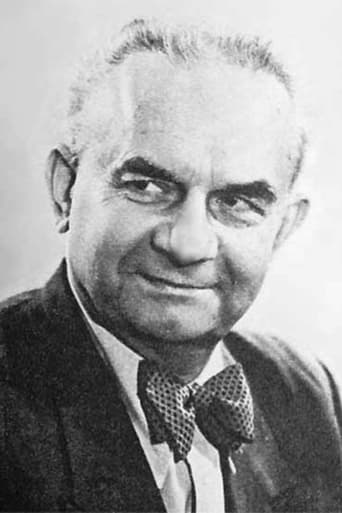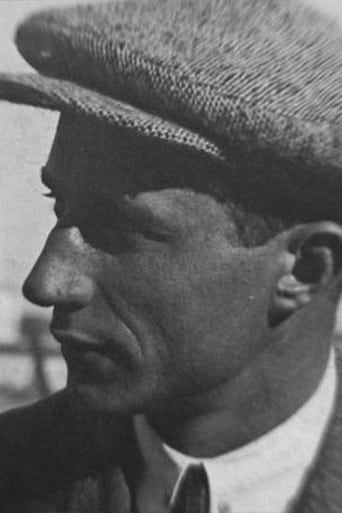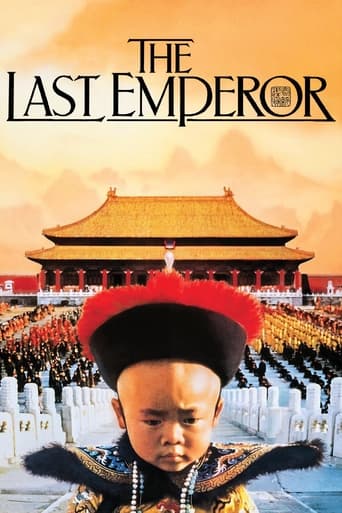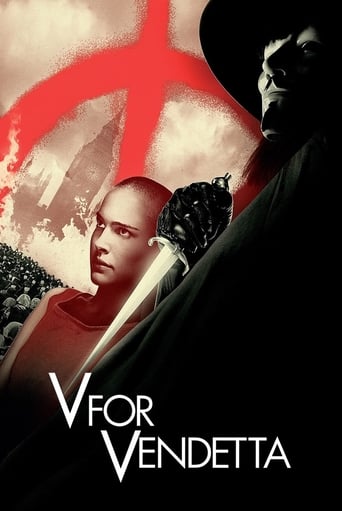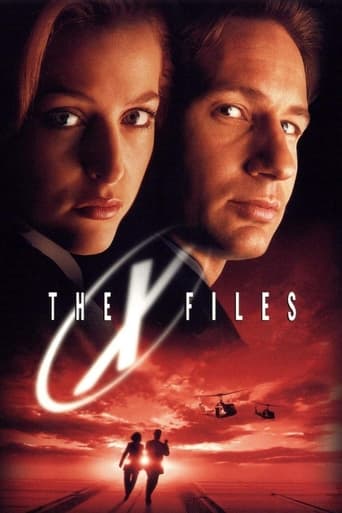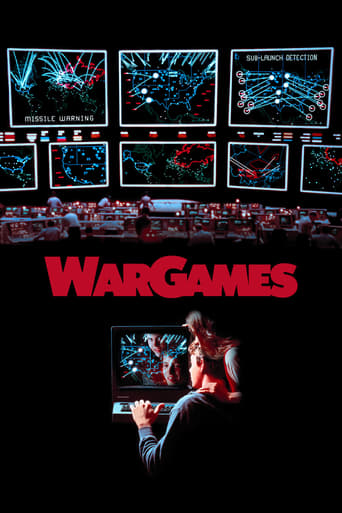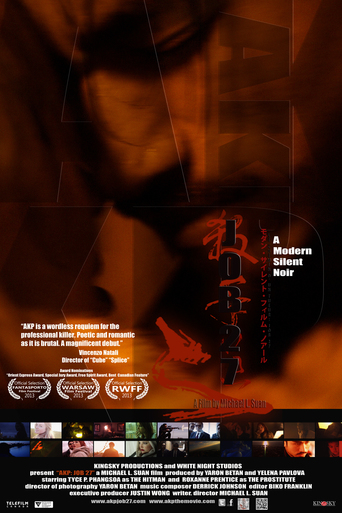
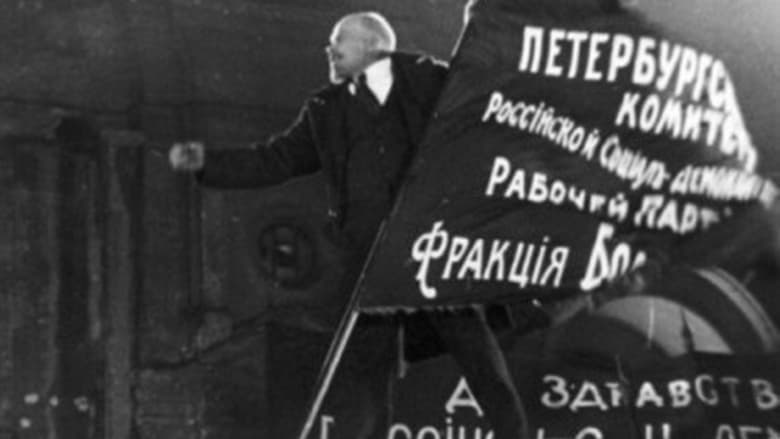
October (Ten Days that Shook the World) (1928)
Sergei M. Eisenstein's docu-drama about the 1917 October Revolution in Russia. Made ten years after the events and edited in Eisenstein's 'Soviet Montage' style, it re-enacts in celebratory terms several key scenes from the revolution.
Watch Trailer
Cast


Similar titles
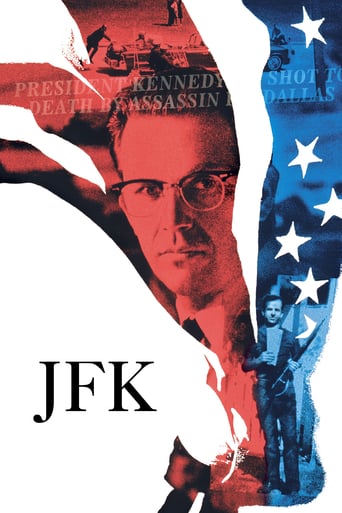
Reviews
(Flash Review)This is a political power struggle war film around a political uprising in Russia during 1917 which I will avoid regurgitating the historical details of as I'll probably get them wrong as it took some brain power to figure everything out in an old silent film. Ha. Anyway, this echoes many cinematic themes of the more famous Battle of Potemkin (1926). The shot framing was full of great diagonals and great use of black and white contrasts. Probably influenced by the Russian Constructivism art movement that began in 1913. More of a fill geek film to watch these days.
Sergei M. Eisenstein is such an enigma. He's simultaneously one of the most frustrating and most beautiful filmmakers in the history of cinema. His films are blatant propaganda of the most shameless variety, and yet, Eisenstein's mode of visual storytelling is absolutely exquisite. Formally, he's truly one of the greatest masters of cinema to ever live. In that regard, he belongs right next to names like Mizoguchi, Ozu, Bergman, Fellini, and Tarkovsky. In any other regard, he does not. Consequently, whether or not Eisenstein appeals to you will probably depend largely on which facet of cinema most engages you as a viewer: form or content.Those who find that their cinematic standards for quality rely mostly on content will probably be annoyed and unimpressed by Eisenstein. The jingoistic propaganda in his films beats you over the head the instant the film begins, and never relents. Eisenstein had absolutely no sense of things like subtext, character development, or applied themes. The content of his films is about as shallow as you'll find anywhere in cinema. On that level, Eisenstein's films generally amount to a Soviet cheerleading session. That being said, I'm not sure there's ever been a greater master in the history of the cinema when it comes to the visual, formal aspects of filmmaking. Eisenstein was a true artist. His eye for compositions was as masterful as any other filmmaker that ever sat in a director's chair. On a visual level, Eisenstein's films are an absolute treasure and are truly awesome to behold. Therefore, viewers who are most affected by a film's form, and not its content, will likely have a very deep appreciation for Eisenstein.Finally, for viewers like myself, who are equally engaged by form and content, Eisenstein remains the most confusing of all directors. On one hand, I find myself disgusted by the obtrusive propaganda in his films; on the other hand, I find myself completely enamored with his gifts as a director, as a formalist, as an artist. He is very much like fellow Russian filmmaker Mikhail Kalatozov in this way. Both directors polarize viewers for this very reason. I don't think Kalatozov was quite as shallow in the content department as Eisenstein was, and I don't think he was quite as brilliant in the form department, but his overall combination of shallow propaganda and stunning formal brilliance is similar to Eisenstein's.In this respect, "October (Ten Days That Shook the World)", Eisenstein's third film, is very much like any other Eisenstein film. The film was actually co-directed (and co-written) by Grigori Aleksandov, who had collaborated on Eisenstein's debut film, "Strike", as a co-writer. Eisenstein's second film, "Battleship Potemkin", is probably his best known film, and is generally considered his masterpiece. Of these three early silent films by Eisenstein, however, I might choose "October" as the best of them. It's very close, but I give the edge to "October" over "Battleship Potemkin" simply because Eisenstein's visual finesse is even slightly more impressive in "October" than it was in "Battleship Potemkin". With Eisenstein's first three films — "Strike", "Battleship Potemkin", and "October" — I've found that each film is a slight improvement over the last in terms of sheer formal mastery. Some of the shots and compositions in "October" (in fact, just about every single one of them) are simply amazing, not just for 1928, but by any standards at all, from the birth of cinema all the way through today's age of digital filmmaking. And as with any true master of filmmaking, it's not just the utter beauty of the shots that's so impressive; it's the way that the director uses those shots in the syntax of a visual language that only cinema can provide. Eisenstein arranges images and intertitles in such a way as to truly create his own cinematic language, much like Godard would do decades later. The cinematography in Eisenstein's films is gorgeous — the compositions impeccable — but he doesn't move his camera much, and a great deal of the work is done in the editing room. That's where this language is truly spoken. Eisenstein revolutionized the art of editing and montage in cinema."October" opens with an image of revolutionaries charging up a grand set of stairs to topple a massive statue of the Tsar. The stairs look similar to the Odessa steps on which the civilians were slaughtered by Cossacks in "Battleship Potemkin", and so there's an interesting (and possibly intentional) duality here. In "Battleship Potemkin", the people were massacred as the soldiers advanced on them ruthlessly and inhumanly, forcing them down the stairs. Now, in "October", the film begins with the people charging back up the stairs, reclaiming the power that was taken from them under the Tsarist dictatorship. Despite the title of the film, "October (Ten Days That Shook the World)" actually takes place over about nine months, in the year 1917. It begins with the February Revolution, in which the Tsarist autocracy was overthrown and replaced by a provisional government of aristocrats and nobles, which itself was overthrown that same year in the October Revolution. The film spans these two revolutions.If you haven't seen Eisenstein before, it's difficult to explain his style of cinema. It's something that really needs to be seen to be understood. The best way to explain "October" is to say that, if you've seen "Battleship Potemkin", this film is very similar in style to that one. If you haven't seen "Battleship Potemkin" or any other Eisenstein silents, then you probably should — like him or not, he's a massive figure in the history of cinema — and although "Battleship Potemkin" is considered his masterpiece, I think "October" is as good of a place to start as any other.Overall, this is a good film. It's filled with both master touches and conspicuous shortcomings, but the former outweigh the latter significantly. RATING: 7.00 out of 10 stars
I had to watch October in my film history class and I hate to say this but I just really did not enjoy it at all. It was super long, like three hours, and I honestly did not understand it. Our professor told us that there was so much symbolism and stuff in it that at the time it came out the people did not even really fully understand it. I definitely do not recommend seeing this movie unless you are just super into this kind of stuff and have a great interest for it. On top of being able to grasp a hold of what is going on this film is also silent making it even harder to get an understanding of everything that's going on. There is not really any main characters to keep up with and with all the shot of different people it is very easy to get mixed up. This film is so chaotic and fast paced, jumping from one thing to the next for a solid three hours. If you like getting headaches try keeping up with this movie. I expected this movie to be pretty good and at the very least somewhat interesting, but I kept finding myself fidgeting in my seat and checking the time till it would end. I wish I had more positive things to say about it because it is apparently quite a masterpiece. Maybe I just don't have the appreciation for films history like I should but I can't help that. Maybe if I had had some more study in the Russian revolution I would not have been quite so lost. Anyways for my personal opinion I would not recommend this movie to anyone and would advise if you are going to show it to your class explain it and the time in Russia very well before actually showing it so maybe the students can follow along with it better.
This film is made in complete over look of the real events of 1928. First of all he has added in more brave, fighting parts to make his idea of the revolution good, making it very unreliable-there were no brave fighting women, they all really went hysterical and had to be protected round the back. This film has been made out of opinion not reliability and history making it unfair if viewers want a good taste of the history. Although there are parts of the story that are true but only because the look and sound perfect for his opinion. This film was made to look good like all films, not to suit reality, therefore again making unreliable and un-true. So to conclude this film uses opinion to make it look good and to make it look how he thought the revolution looked like.


